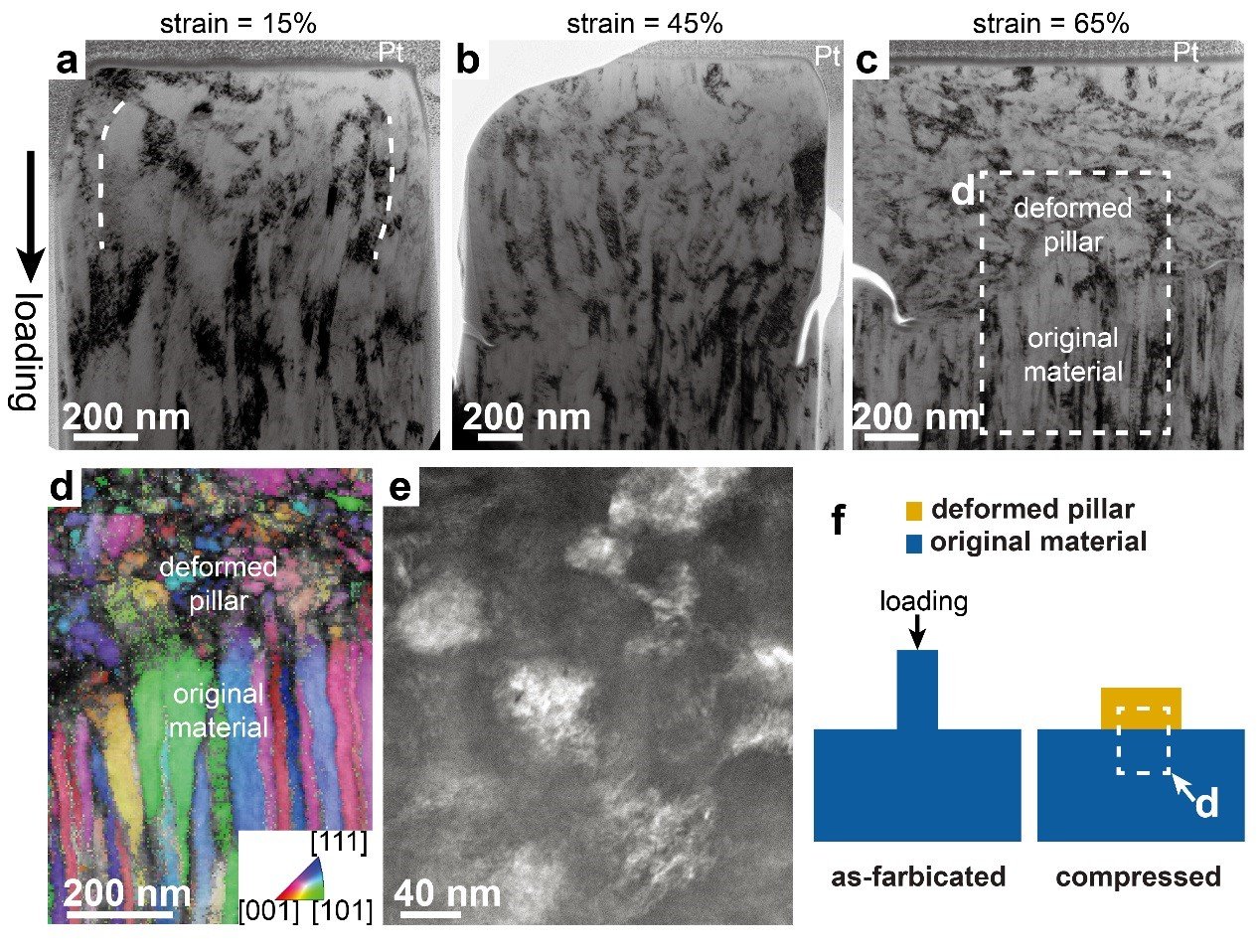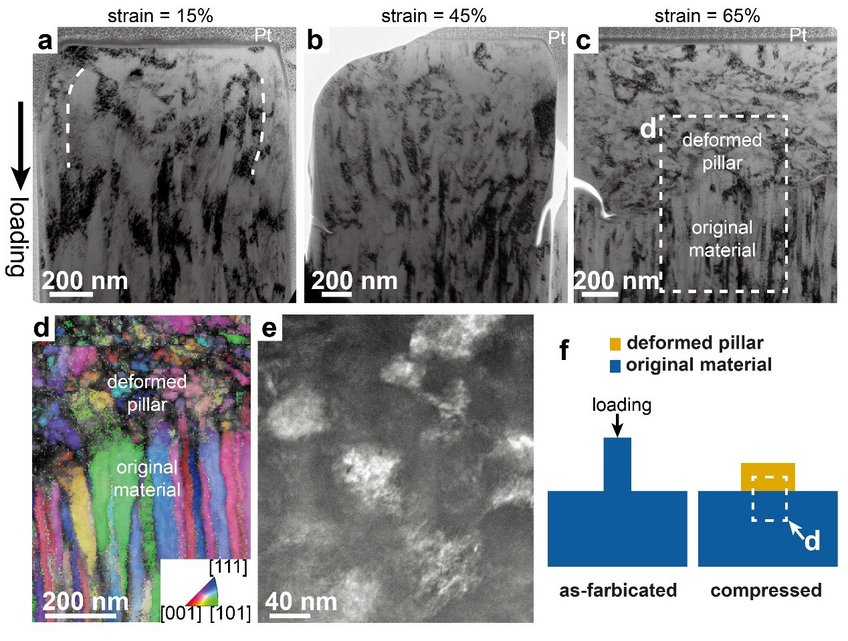Massive interstitials enable near-theoretical strength of ductile high-entropy alloys
Humanity has long been pursuing stronger and tougher metals, with presently an aim to reduce greenhouse gases emission by allowing weight reduction and improve sustainability of structural materials via prolonging their lifetime. Interstitial solid solutioning is an effective method to strengthen metals. Carbon, nitrogen and oxygen are commonly used interstitials, e.g. carbon has been introduced in iron to improve the strength for more than a thousand years. Oxygen is a useful interstitial element applied in reactive metals, such as titanium and niobium. With moderate addition of interstitial oxygen, the strength of the materials can be increased while maintaining a good ductility. However, usually the oxygen content could not exceed 2%, otherwise the ceramic oxides could form from the solid solution, and dramatically decrease the ductility. We propose a novel HEA design strategy via massive interstitials strengthening. This overturns the previous alloy design with minor interstitials doping and renders the interstitials to be principal elements. Notably, no ceramic oxide is formed in our newly developed HEAs, which promotes a near theoretical strength and a large formability. The massive interstitials alloying strategy thus inspires next-generation HEA design for excellent mechanical properties.

